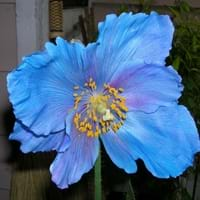Life Span
Perennial
Perennial
Origin
North America, United States, Northeastern United States, Mid-Atlantic United States, Southeastern United States, Canada
Western Europe, Southern Asia
Types
Red chokeberry, Purple chokeberry
Not available
Habitat
Anthropogenic, Boggy areas, Cliffs, Fens, Swamps, Terrestrial, Wet lands, Woodlands
Shady Edge, Woodland Garden Dappled Shade
USDA Hardiness Zone
3-8
Not Available
Sunset Zone
A2, A3, 1a, 1b, 2a, 2b, 3a, 3b, 4, 5, 6, 7
Not Available
Habit
Thicket/Colonizing
Clump-Forming
Flower Color
Not Available
White, Yellow, Red, Blue, Orange, Pink, Rose
Flower Color Modifier
Not Available
Bicolor
Fruit Color
Purplish-black
Green, Tan
Leaf Color in Spring
Not Available
Green, Blue Green
Leaf Color in Summer
Not Available
Green, Blue Green
Leaf Color in Fall
Not Available
Green, Blue Green
Leaf Color in Winter
Not Available
Light Green
Leaf Shape
Elliptic
Rosette
Plant Season
Spring, Summer, Fall
Summer
Sunlight
Full Sun, Partial Sun, Partial shade
Partial Sun, Partial shade
Growth Rate
Medium
Medium
Type of Soil
Clay, Loam
Loam
The pH of Soil
Acidic, Neutral, Alkaline
Acidic, Neutral
Soil Drainage
Average
Well drained
Bloom Time
Late Spring, Early Summer
Summer
Tolerances
Not Available
Drought
Where to Plant?
Ground, Pot
Container, Ground, Pot
How to Plant?
Cuttings, Divison, Seedlings
Divison, Seedlings
Plant Maintenance
Medium
Medium
Watering Requirements
Average Water Needs, Do Not over Water, Requires regular watering
Requires regular watering, Use and maintain water-efficient soaker hoses
In Summer
Lots of watering
Lots of watering
In Spring
Moderate
Moderate
In Winter
Average Water
Average Water
Soil pH
Acidic, Neutral, Alkaline
Acidic, Neutral
Soil Type
Clay, Loam
Loam
Soil Drainage Capacity
Average
Well drained
Sun Exposure
Full Sun, Partial Sun, Partial shade
Partial Sun, Partial shade
Pruning
Prune after flowering, Remove branches that rub together, Remove damaged leaves, Remove dead branches, Remove dead leaves, Remove diseased branches by the tool's blades dipped into the alcohol solution
Remove damaged leaves, Remove dead branches, Remove dead leaves
Fertilizers
10-10-10, All-Purpose Liquid Fertilizer, Apply N-P-K
All-Purpose Liquid Fertilizer
Pests and Diseases
Red blotch
Red blotch
Plant Tolerance
Not Available
Drought
Flower Petal Number
Not Available
Single
Foliage Texture
Not Available
Not Available
Foliage Sheen
Not Available
Not Available
Attracts
Not Available
Butterflies, Flying insects
Allergy
Anaphylaxis
Not Available
Aesthetic Uses
Showy Purposes
Beautification, Bouquets, Cottage Garden, Hanging Basket, Used for decorating walls, fences, gates, hedges, etc., Woodland margins
Beauty Benefits
Good for skin
Not Available
Environmental Uses
Air purification, Food for birds, Wildlife
Air purification, Erosion control, Food for birds, Food for insects
Medicinal Uses
anti-cancer, Antioxidants, Cold
Not Available
Part of Plant Used
Fruits
Flowers, Pods
Other Uses
Pectin
Animal Feed, Beneficial species for attracting pollinators, Decoration Purposes, Oil is used in perfume, soaps, creams, etc.
Used As Indoor Plant
No
Sometimes
Used As Outdoor Plant
Yes
Yes
Garden Design
Foundation, Mixed Border
Feature Plant, Mixed Border
Botanical Name
ARONIA melanocarpa
Meconopsis grandis
Common Name
Black Chokeberry
Himalayan blue poppy
In Hindi
Black Chokeberry Shrub
Meconopsis grandis
In German
Schwarz Aronia Strauch
Meconopsis grandis
In French
Noir Chokeberry Arbuste
Meconopsis grandis
In Spanish
Chokeberry negro Arbusto
Meconopsis grandis
In Greek
Μαύρο Chokeberry θάμνων
Meconopsis grandis
In Portuguese
Chokeberry preto Arbusto
Meconopsis grandis
In Polish
Krzew aronii
Meconopsis grandis
In Latin
Lichen Frutex
Grandis Meconopsis
Phylum
Magnoliophyta
Streptophyta
Class
Magnoliopsida
Magnoliopsida
Order
Rosales
Ranunculales
Family
Rosaceae
Papaveraceae
Clade
Angiosperms, Eudicots, Rosids
Angiosperms, Eudicots
Subfamily
Amygdaloideae
Paperveroideae
Number of Species
Not Available
Season and Care of Black Chokeberry and Blue poppy
Season and care of Black Chokeberry and Blue poppy is important to know. While considering everything about Black Chokeberry and Blue poppy Care, growing season is an essential factor. Black Chokeberry season is Spring, Summer and Fall and Blue poppy season is Spring, Summer and Fall. The type of soil for Black Chokeberry is Clay, Loam and for Blue poppy is Loam while the PH of soil for Black Chokeberry is Acidic, Neutral, Alkaline and for Blue poppy is Acidic, Neutral.
Black Chokeberry and Blue poppy Physical Information
Black Chokeberry and Blue poppy physical information is very important for comparison. Black Chokeberry height is 182.88 cm and width 182.88 cm whereas Blue poppy height is 30.00 cm and width 25.40 cm. The color specification of Black Chokeberry and Blue poppy are as follows:
Black Chokeberry flower color: Not Available
Black Chokeberry leaf color: Not Available
Blue poppy flower color: White, Yellow, Red, Blue, Orange, Pink and Rose
- Blue poppy leaf color: Green and Blue Green
Care of Black Chokeberry and Blue poppy
Care of Black Chokeberry and Blue poppy include pruning, fertilizers, watering etc. Black Chokeberry pruning is done Prune after flowering, Remove branches that rub together, Remove damaged leaves, Remove dead branches, Remove dead leaves and Remove diseased branches by the tool's blades dipped into the alcohol solution and Blue poppy pruning is done Remove damaged leaves, Remove dead branches and Remove dead leaves. In summer Black Chokeberry needs Lots of watering and in winter, it needs Average Water. Whereas, in summer Blue poppy needs Lots of watering and in winter, it needs Average Water.





